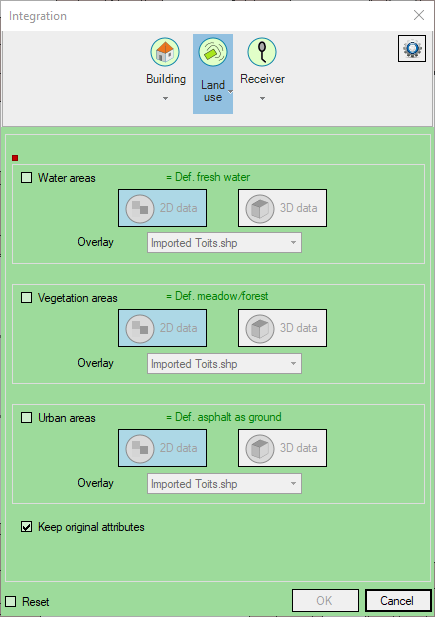|
<< Click to display Table of content >> Integration of land use |
  
|
|
<< Click to display Table of content >> Integration of land use |
  
|
Depending on the type of area selected (water, vegetation or urban), a material is associated with the area created. This material is defined in the default parameters.
To integrate land use:
•From the ribbon Model, click on the button ![]() in the group Integration.
in the group Integration.
•Click the Land Use button.

Land use integration
•Select Water areas, Vegetation areas and/or Urban areas.
•Enter the origin of the data for each area type selected:
oIf the data is in 2D, click on the 2D data button.
oIf the data is in 3D, click on the 3D data button.
oThe name of the Overlay containing the data to be integrated.
The Keep original attributes option allows you to keep the attributes on the objects in the original overlay.
The Rounded coordinates option allows you to round coordinates of all polygon vertices.
The Reset option deletes all old land use area polygons already present. By leaving this option unchecked, you can then add the polygons to the existing 'Land Use' overlay. It is then possible to make several successive integrations in different geographical areas and for different polygons.
•Click OK to confirm.
MithraREM has many helpful features to simplify integration of data and providing information on errors made by the user. With land use, a test checks whether the data is for 2D / 3D areas and the result is: 'Compliant' or 'Not compliant'.

Geometry test (2D or 3D) of selected data
The land use is added to the project and a 'Land Use' overlay is added to the composition. It corresponds to the 'Var_X_LandUse.bds' file created and saved in the project directory. It contains the water, vegetation and urban areas.